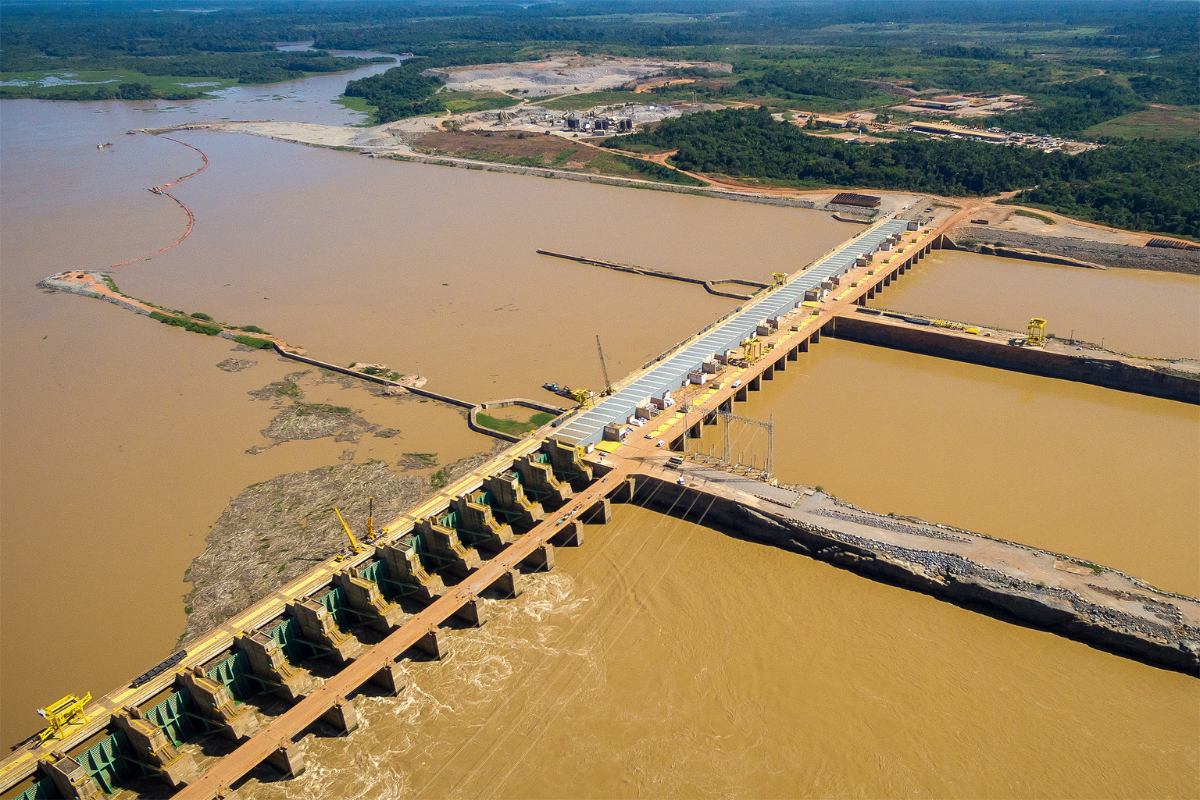On a hot August day in the city of Guajará-Mirim, in the northern Brazilian state of Rondônia, more than 140 people packed into a training center for a consultation on a proposed hydroelectric project — one that has rekindled debates on power plants in the Amazon, as concerns over climate change, energy security, and the plant’s socio-environmental impacts collide.
Representatives from the electricity sector and the government had come to share the first studies for the so-called Ribeirão dam, a binational initiative between Brazil and Bolivia targeted on the Madeira River, which divides the two countries just north of Guajará-Mirim and in the Amazon.
As a spokeswoman from Brazil’s Mines and Energy Ministry opened the presentation, protests broke out, led by around 40 demonstrators from traditional communities and organizations representing them. “No to the Ribeirão hydroelectric dam! Water for life, not death!” read one of their banners. The protestors complained of a lack of participation and transparency in the preparation of these preliminary studies for the hydroelectric project. The organizers responded by ending the event, a decision they said was made “for security reasons.”
Gerônima Costa, president of the local fishing community Z-2, said she had only received the official invitation to attend on the same day as the meeting and reported that representatives at the event then told them “the study had already been done.”
“They didn’t need us to approve anything,” she added. “What kind of work is this that doesn’t listen to the community?”
Local dissatisfaction with the hydroelectric project had been expressed earlier in an open letter addressed to the presidents of Brazil and Bolivia, Luiz Inácio Lula da Silva and Luis Arce, dated July 30, 2023, and signed by 37 civil society organizations. “Summoning communities to publicize studies made without the society’s prior knowledge (…) violates the participation of the affected peoples and hides the synergistic and cumulative impacts that will affect them,” they wrote.
Amazon indigenous leaders, fishers, scientists, and those who live off the land told reporters of common fears surrounding the project: the loss of ways of life and the collapse of ecosystems.
Amazon hydroelectric plants
The Madeira River is fundamental to the balance of the Amazon basin. It stretches over 3,300 kilometers from its source in the Andes mountains in northern Bolivia to its mouth on the Amazon River in Itacoatiara, in Brazil’s Amazonas state. This turbid, nutrient-rich river is home to much of the biome’s aquatic biodiversity — including 60 percent of fish species — and contributes around half of the sediment that reaches the Amazon River.
Despite this, the Madeira River is suffering from a range of anthropogenic impacts linked to land grabbing, deforestation, farming, illegal mining, and dams.
Following the protests, a series of meetings took place in the second half of 2023 to discuss the consequences of the project, which would be the third hydroelectric facility on the Madeira River. The other two — Santo Antônio in Porto Velho and Jirau in Jaci-Paraná — can already contribute as much as 6.7 percent of the electricity that makes it onto the national grid.
Jirau and Santo Antônio are run-of-river dams, which means they rely on the natural energy of the river to move their turbines rather than water held in a reservoir. “The effect of these dams on the hydrological regime is minimal,” said Javier Tomasella, a researcher at Brazil’s National Institute for Space Research (INPE), but he explained that the technology is more vulnerable to the climate.
In recent decades, climatic events on the Madeira River have been “like a pendulum,” according to Mr. Tomasella, going from one...


 Search
Search






































